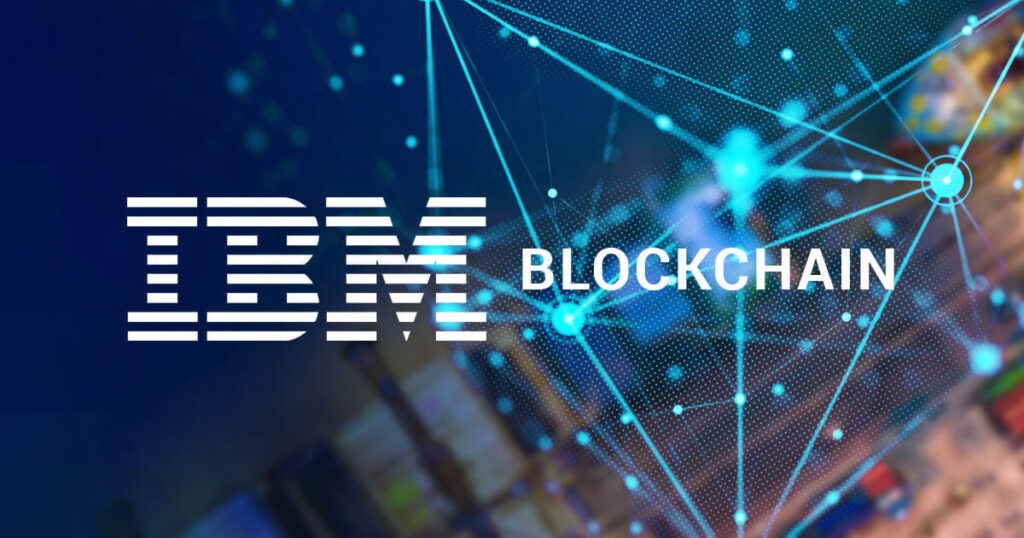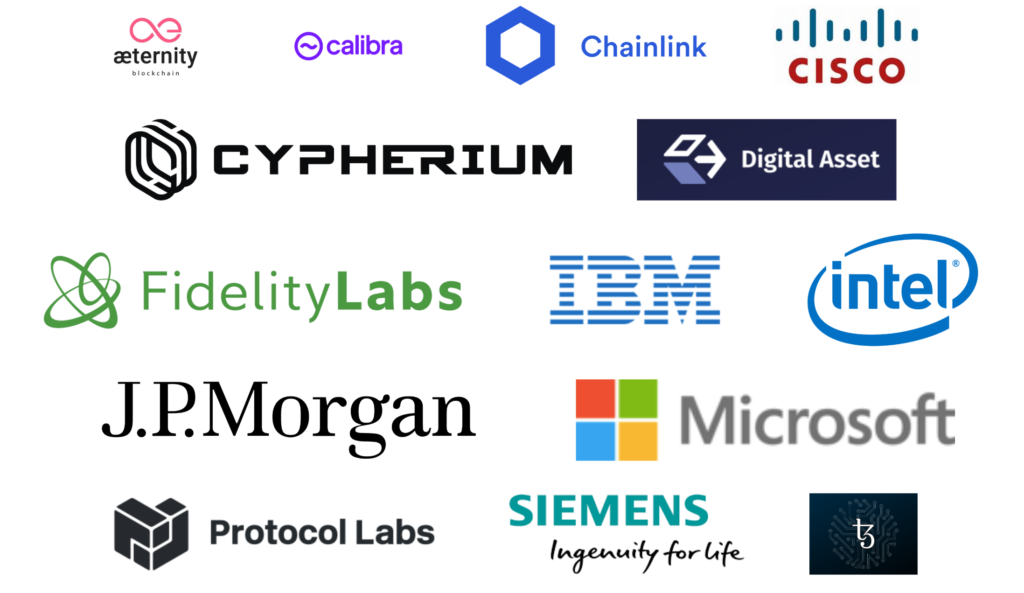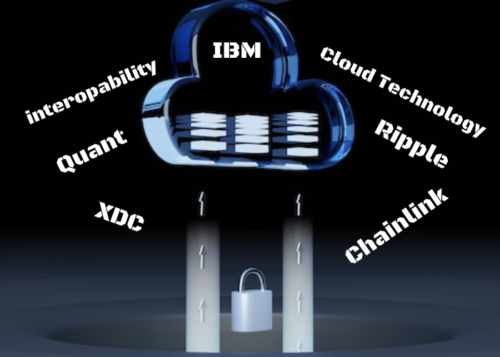In today’s rapidly evolving digital landscape, the need for seamless interoperability between different technologies has become a top priority. And when it comes to unlocking the true potential of interoperability, the IBM Mainframe stands tall as a pioneer. In this groundbreaking exploration, we journey into the world of the IBM Mainframe and its compatibility with some of the most innovative technologies of our time – Quant, Ripple, XDC, and Chainlink.
From bridging the gap between traditional financial systems and blockchain networks to enabling secure and efficient data transfers, the possibilities are endless. Join us as we uncover the unmatched power of interoperability and witness how the IBM Mainframe is evolutionizing the way businesses and industries connect, collaborate, and thrive in a digital-first world. Get ready to embark on a journey that will redefine the way you perceive technology integration and unlock a world of endless possibilities.
Table of Contents
Overview of the IBM Mainframe and its significance in the world of computing
The IBM Mainframe has a rich history in the world of computing. Introduced in the 1960s, it quickly became the backbone of many large-scale enterprises, providing unmatched processing power and reliability. Over the years, the IBM Mainframe has evolved to keep up with the changing technology landscape, and today, it continues to be a critical component in various industries, including finance, healthcare, and government.
One of the key strengths of the IBM Mainframe is its ability to handle massive workloads and process vast amounts of data. This makes it an ideal platform for running mission-critical applications that require high availability, scalability, and security. The Mainframe’s robust architecture and virtualization capabilities allow multiple workloads to run concurrently, ensuring efficient resource utilization and cost-effectiveness.
The IBM Mainframe also offers unparalleled security features, with built-in encryption, access controls, and auditing capabilities. These features are essential for industries that deal with sensitive data, such as financial institutions. Additionally, the Mainframe’s reliability and fault-tolerant design ensure uninterrupted operations, minimizing downtime and enhancing business continuity.
Overall, the IBM Mainframe’s significance in the world of computing cannot be overstated. Its power, reliability, and security have made it a trusted platform for businesses and organizations across industries. Now, let’s explore how the Mainframe is embracing interoperability and integrating with cutting-edge technologies like Quant, Ripple, XDC, and Chainlink.

Understanding Quant and its capabilities in the realm of interoperability
Quant is a groundbreaking technology that aims to bridge the gap between traditional financial systems and blockchain networks. It provides a layer of interoperability that enables seamless and secure communication between different systems, allowing for the transfer of assets and data across disparate platforms.
The IBM Mainframe’s compatibility with Quant opens up a world of possibilities for businesses and financial institutions. By integrating Quant with the Mainframe, organizations can leverage the benefits of blockchain technology while still maintaining the reliability and security of their existing infrastructure. This integration enables the Mainframe to act as a bridge between legacy systems and blockchain networks, facilitating the adoption of distributed ledger technology without disrupting existing operations.
Quant’s capabilities extend beyond just financial systems. It also enables interoperability between different blockchain networks, allowing for the transfer of assets and data across multiple platforms. This interoperability is crucial in a world where various blockchain networks coexist, each with its own unique features and use cases. The IBM Mainframe’s compatibility with Quant ensures that businesses can seamlessly interact with different blockchain networks, unlocking new opportunities for collaboration and innovation.
The integration of Quant with the IBM Mainframe offers a powerful solution for businesses looking to embrace blockchain technology while maintaining the reliability and security of their existing systems. It opens up new avenues for collaboration, enables efficient asset transfers, and paves the way for a more interconnected and decentralized future.
Exploring the compatibility between Ripple and the IBM Mainframe
Ripple is another innovative technology that is evolutionizing the world of finance. It is a blockchain-based platform that facilitates fast, low-cost international money transfers. Ripple’s native cryptocurrency, XRP, acts as a bridge currency, allowing for seamless conversion between different fiat currencies.
The compatibility between Ripple and the IBM Mainframe presents exciting opportunities for financial institutions. By integrating Ripple with the Mainframe, organizations can leverage the benefits of fast, secure, and low-cost cross-border transactions while still utilizing the Mainframe’s robust infrastructure for processing and storing financial data.
The IBM Mainframe’s compatibility with Ripple extends beyond just transaction processing. It also enables interoperability between Ripple and traditional financial systems, allowing for the seamless integration of blockchain technology into existing infrastructures. This interoperability is crucial for financial institutions that want to leverage the advantages of Ripple while maintaining compatibility with legacy systems.
In addition to its compatibility with Ripple, the IBM Mainframe also provides a secure and scalable platform for running Ripple nodes. Ripple nodes are essential for participating in the Ripple network and facilitating transactions. By running Ripple nodes on the Mainframe, organizations can ensure high availability, reliability, and security for their Ripple infrastructure.
Successful interoperability between the IBM Mainframe and Ripple are already emerging. Financial institutions are leveraging this compatibility to streamline cross-border payments, reduce transaction costs, and improve overall efficiency. The integration of Ripple with the IBM Mainframe is transforming the way the financial industry operates, creating a more connected and accessible global financial system.
XDC and its potential for interoperability with the IBM Mainframe
XDC, short for XinFin Digital Contract, is a hybrid blockchain platform that combines the best of both public and private blockchains. It provides a secure and scalable infrastructure for building decentralized applications (dApps) and facilitating enterprise-level transactions.
The compatibility between XDC and the IBM Mainframe offers exciting opportunities for businesses looking to leverage blockchain technology. By integrating XDC with the Mainframe, organizations can benefit from the scalability, security, and flexibility of XDC while still utilizing the Mainframe’s robust infrastructure for data processing.
The IBM Mainframe’s compatibility with XDC enables seamless interoperability between XDC-based dApps and legacy systems. This compatibility is crucial for organizations that want to embrace blockchain technology while still maintaining compatibility with existing infrastructures. The Mainframe acts as a bridge, allowing for the secure transfer of data and assets between XDC and traditional systems.
The Mainframe’s reliability and fault-tolerant design make it an ideal platform for running XDC nodes. XDC nodes are essential for participating in the XDC network and facilitating transactions. By running XDC nodes on the Mainframe, organizations can ensure the uninterrupted operation of their XDC infrastructure, minimizing downtime and enhancing overall efficiency.
Furthermore, we are starting to see instances of successful integration between IBM Mainframe and XDC. Industries such as supply chain management, healthcare, and energy are leveraging this compatibility to improve transparency, streamline processes, and enhance collaboration. The integration of XDC with the IBM Mainframe is evolutionizing the way businesses connect, collaborate, and transact, unlocking new possibilities for efficiency and innovation.
The role of Chainlink in facilitating interoperability with the IBM Mainframe
Chainlink is a decentralized oracle network that connects smart contracts with real-world data sources and APIs. It acts as a bridge, enabling smart contracts to interact with external systems and access off-chain data. This interoperability between the blockchain and the external world is crucial for the adoption and expansion of decentralized applications.
The compatibility between Chainlink and the IBM Mainframe opens up new possibilities for businesses and developers. By integrating Chainlink with the Mainframe, organizations can leverage the Mainframe’s robust infrastructure for data processing and storage while still accessing real-world data through Chainlink’s decentralized oracle network.
The IBM Mainframe’s compatibility with Chainlink enables secure and reliable data transfers between smart contracts and external systems. This compatibility is essential for industries that rely on accurate and up-to-date data, such as finance, supply chain management, and insurance. The Mainframe acts as a trusted intermediary, ensuring the integrity and confidentiality of data transfers.
In addition to data transfers, the IBM Mainframe also provides a scalable platform for running Chainlink nodes. Chainlink nodes are crucial for providing external data to smart contracts and validating the authenticity of that data. By running Chainlink nodes on the Mainframe, organizations can ensure the availability and reliability of their Chainlink infrastructure.
Practical instances showcasing successful compatibility between IBM Mainframe and Chainlink are already starting to surface. Industries such as insurance and decentralized finance (DeFi) are leveraging this compatibility to create innovative applications that rely on accurate and verifiable data. The integration of Chainlink with the IBM Mainframe is evolutionizing the way businesses interact with external systems, unlocking new possibilities for automation and transparency.

Benefits and advantages of leveraging interoperability with the IBM Mainframe
The integration of Quant, Ripple, XDC, and Chainlink with the IBM Mainframe offers numerous benefits and advantages for businesses and industries. Let’s explore some of the key advantages of leveraging interoperability with the Mainframe:
Efficient data transfers: The Mainframe’s robust infrastructure ensures fast and secure data transfers between different systems and networks. This efficiency is crucial for industries that rely on real-time data, such as finance and supply chain management.
Cost-effectiveness: By leveraging the Mainframe’s scalability and virtualization capabilities, organizations can optimize resource utilization and reduce infrastructure costs. This cost-effectiveness is especially important for industries that handle large volumes of data and require high processing power.
Reliability and security: The IBM Mainframe is renowned for its reliability and security features. By integrating innovative technologies with the Mainframe, organizations can ensure the integrity and confidentiality of data transfers, protecting sensitive information from unauthorized access.
Compatibility with legacy systems: The IBM Mainframe’s compatibility with Quant, Ripple, XDC, and Chainlink enables seamless integration with existing infrastructures. This compatibility ensures that businesses can leverage the benefits of innovative technologies while still maintaining compatibility with legacy systems.
Scalability: The Mainframe’s scalability allows organizations to handle increasing workloads and data volumes without compromising performance. This scalability is crucial for industries that experience rapid growth or seasonal fluctuations in demand.
Overall, leveraging interoperability with the IBM Mainframe offers significant advantages for businesses and industries. It enables efficient data transfers, reduces costs, enhances reliability and security, ensures compatibility with legacy systems, and provides scalability for future growth.
Challenges and considerations when integrating Quant, Ripple, XDC, and Chainlink with the IBM Mainframe
While the integration of Quant, Ripple, XDC, and Chainlink with the IBM Mainframe offers numerous benefits, there are also challenges and considerations that organizations need to keep in mind. Let’s explore some of these challenges:
Complexity of integration: Integrating innovative technologies with the IBM Mainframe can be complex and require specialized expertise. Organizations need to ensure they have the necessary resources and skills to successfully implement and maintain these integrations.
Data compatibility: Ensuring data compatibility between different systems and networks can be a challenge. Organizations need to define clear data standards and establish efficient data mapping processes to ensure seamless interoperability.
Security and privacy: Integrating external systems with the IBM Mainframe introduces additional security and privacy risks. Organizations need to implement robust security measures and establish clear data governance policies to protect sensitive information.
Legacy system limitations: The compatibility of Quant, Ripple, XDC, and Chainlink with the IBM Mainframe depends on the capabilities and limitations of existing legacy systems. Organizations need to assess the compatibility of their legacy systems and identify any potential roadblocks before initiating integration efforts.
Maintenance and support: Integrating innovative technologies with the IBM Mainframe requires ongoing maintenance and support. Organizations need to establish clear processes and workflows to ensure the timely resolution of issues and the continuous improvement of integrated systems.
It is essential for organizations to carefully consider these challenges and develop a comprehensive integration strategy that addresses these considerations. By doing so, businesses can maximize the benefits of interoperability while mitigating potential risks.
Future developments and trends in interoperability with the IBM Mainframe
The world of technology is constantly evolving, and the future of interoperability with the IBM Mainframe holds exciting possibilities. Here are some of the key developments and trends to watch out for:
Expansion of interoperability protocols: As the demand for interoperability grows, we can expect to see the development of new protocols and standards that facilitate seamless communication between different systems and networks. These protocols will play a crucial role in enabling efficient and secure interoperability with the IBM Mainframe.
Integration with emerging technologies: The IBM Mainframe’s compatibility is not limited to just Quant, Ripple, XDC, and Chainlink. As new and emerging technologies emerge, we can expect to see further integration with the Mainframe, unlocking new possibilities for collaboration and innovation.
Advancements in security and privacy: As interoperability becomes more prevalent, there will be an increased focus on enhancing security and privacy measures. We can expect to see advancements in encryption, access controls, and data governance to ensure the secure transfer of information between different systems and networks.
Greater industry adoption: As more industries recognize the benefits of interoperability, we can expect to see greater adoption of interoperability with the IBM Mainframe. Industries such as finance, healthcare, supply chain management, and government are likely to lead the way in embracing interoperability and reaping its benefits.
Integration with AI and machine learning: The integration of AI and machine learning with the IBM Mainframe holds immense potential for unlocking new insights and enhancing decision-making. We can expect to see increased integration between these technologies, enabling organizations to leverage the power of AI and machine learning in their interoperability efforts.
The future of interoperability with the IBM Mainframe is promising, with new developments and trends reshaping the way businesses connect, collaborate, and thrive in a digital-first world.
Unleashing the full potential of the IBM Mainframe through interoperability
The IBM Mainframe’s compatibility with Quant, Ripple, XDC, and Chainlink represents a significant milestone in the world of technology integration. It unlocks a world of possibilities for businesses and industries, enabling seamless interoperability between different systems and networks.
By leveraging the power of interoperability, organizations can bridge the gap between traditional systems and innovative technologies, unlocking new opportunities for collaboration, efficiency, and innovation. The IBM Mainframe’s robust infrastructure, reliability, and security features make it an ideal platform for integrating with cutting-edge technologies, ensuring the integrity and confidentiality of data transfers.
As we look towards the future, the potential of interoperability with the IBM Mainframe is limitless. New developments and trends will continue to reshape the way businesses connect




